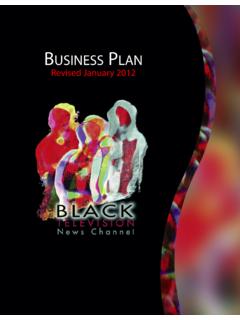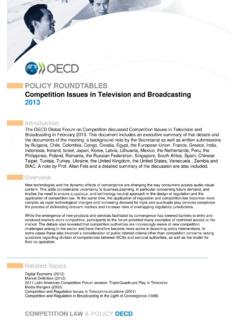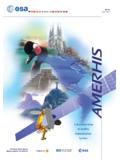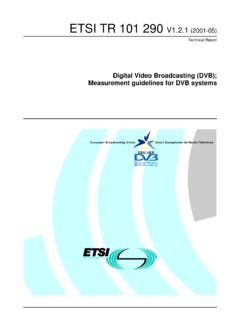Transcription of ANALOGUE TO DIGITAL BROADCAST MIGRATION …
1 1 Release 1 28 January 2002 GP/DTT/001 introduction TO SADIBA RECOMMENDATIONS SADIBA (the Southern African DIGITAL Broadcasting Association) is a voluntary industry forum dedicated to promoting the co-ordinated market driven introduction of DIGITAL broadcasting technologies in the Southern African region. SADIBA was founded in 1997. With the establishment of the DIGITAL Broadcasting Advisory Body in March 2001, the Association committed itself to supporting the work of the Body, the Regulator and others looking into DIGITAL broadcasting within Southern Africa. SADIBA members researched international DIGITAL broadcasting trends and their application within the local context. Consensus positions on DIGITAL broadcasting systems, standards as well as policy and regulatory frameworks were defined and formulated into a set of recommendations.
2 These recommendations are made in good faith in an attempt to provide an industry view in support of current and future processes. The texts are not to be interpreted as critique of the status quo or as pre-empting the work of DBAB, the regulator or the bureau of standards. SADIBA trusts that these recommendations will be of value to all concerned. ANALOGUE TO DIGITAL TELEVISION BROADCAST MIGRATION STRATEGY FOR SOUTH AFRICA EXECUTIVE SUMMARY The DIGITAL broadcasting proposition for South Africa does not readily pass the accessibility, affordability and take-up test criteria with overwhelming results. South Africa as a country faces more imposing challenges with higher budget priorities for education and health. However, it is crucial that the long-term benefits of creating an information society not be overlooked because of short-term budget and national priorities.
3 As there is no clear market demand for services at present and a forced or managed MIGRATION would be an effective way of achieving various goals within desired timeframes universal service, minimising DIGITAL divide etc. A managed market introduction that entails the following is recommended: Government imposing a moratorium on ANALOGUE roll-out Government announcing an early and fixed switch-off date for ANALOGUE . Push to leap-frog to DIGITAL networks and roll-out and as instantaneous way of providing access to multiple services and multimedia universal service of which education is a key component 2 Release 1 28 January 2002 GP/DTT/001 Large Network coverage to be provided in accordance with a managed approach in order to create a large market and induce economies of scale benefits (lower receiver cost) The choice of ANALOGUE services to be gradually be reduced once DTT services are widely available, nudging consumers towards DIGITAL .
4 DIGITAL broadcasting, if implemented in such a manner so as to leap-frog technology can be deployed strategically ! to meet national education objectives using distance education technology solutions ! provide the means to distribute public BROADCAST content to all South Africans (universal service) through DTT s increased transmission ! present broadcasters with an opportunity to maximise additional revenue streams through DTT s increased transmission capacities Thus government must acknowledge that South Africa is not in a state of readiness to easily meet the accessibility, affordability and take-up test criteria for DIGITAL broadcasting and attempt to address the underlying reasons for this. The managed market uptake approach is not be to be mistaken for an unwelcome market entrance that is imposed upon public and industry.
5 Rather, it is crucial that all stakeholders understand this approach to be the most suitable method to link into national objectives to grow the economy, achieve universal service and ultimately create an information society in South Africa. It is recommended that government make a decision on the roll-out for DIGITAL broadcasting with a commencement date being 2002. This would allow sufficient time for proper and comprehensive planning that would take into account financial impact, staffing and skills impact, technology impact and impact on society amongst other factors. The first roll-out should commence at the latest by late 2003. The ANALOGUE services should gradually be reduced and all ANALOGUE broadcasts terminated by 2012.
6 CONCLUSION DIGITAL broadcasting challenges existing business models for both service providers as well as content producers. Broadcasters, industry, policymakers, facilities and service providers are facing the greatest and most ominous challenge since colour TV. DIGITAL broadcasting elevates audiences to a critical stakeholder position in the decision-making process. Technology factors, whilst requiring earnest consideration to ensure effective implementation, is the least influencing factor against the social and economic backdrop of South Africa where the country would gain vast benefit by adopting DIGITAL broadcasting solutions to meet national objectives RECOMMENDATION SADIBA recommends that DIGITAL television broadcasting services be introduced in South Africa using a managed market uptake strategy.
7 1 refer to page 5 6M South Africans do not have access to BROADCAST signal 3 Release 1 28 January 2002 GP/DTT/001 PAGE OF CONTENTS introduction TO SADIBA RECOMMENDATIONS 1 EXECUTIVE SUMMARY 1 CONCLUSION 2 1. WORK OBJECTIVE 4 KEY ASSUMPTIONS 4 2. TELEVISION BROADCASTING IN SOUTH AFRICA TODAY 4 REVENUE MODELS 4 POPULATION AND TELEVISION AUDIENCE DEMOGRAPHICS 5 3.
8 BROADCASTERS: THE TELEVISION BROADCAST CONTENT CHAIN 7 DIGITAL TELEVISION 7 4. FINANCIAL CONSIDERATION 14 FINANCIAL IMPACT FOR BROADCASTERS AND SIGNAL DISTRIBUTORS 14 FINANCIAL IMPACT ON CONSUMERS 15 FUNDING MODELS FOR BROADCASTERS 16 5. TECHNOLOGY CONSIDERATIONS 16 TYPICAL DVB-T OPERATION 17 INTERACTIVE SERVICES 18 SOUND 19 RECEIVER SPECIFICATIONS 20
9 6. PLANNING CONSIDERATIONS 20 FREQUENCY PLANNING CONSIDERATIONS 20 7. LEGISLATION CONSIDERATIONS 22 LICENSING FRAMEWORKS 23 PROPOSED DEFINITIONS 24 INDUSTRY PLAYERS IN A DIGITAL BROADCASTING ENVIRONMENT 24 8. ADVANTAGES OF DIGITAL BROADCASTING 25 9. DISADVANTAGES OF DIGITAL BROADCASTING 26 10.
10 MIGRATION OPTIONS 28 11. RECOMMENDED OPTION AND STRATEGY FOR SOUTH AFRICA 31 CONCLUSION 33 4 Release 1 28 January 2002 GP/DTT/001 1. WORK OBJECTIVE The main objective of the study conducted by SADIBA DTT WorkGroup 3 (WG3) was to provide a high level examination of the factors for consideration for an ANALOGUE to DIGITAL MIGRATION strategy to be used for decision making for DIGITAL Television Broadcasting in South Africa. This report also states to sufficient detail for the purposes of this report, how DIGITAL broadcasting would impact on the various stakeholders.






